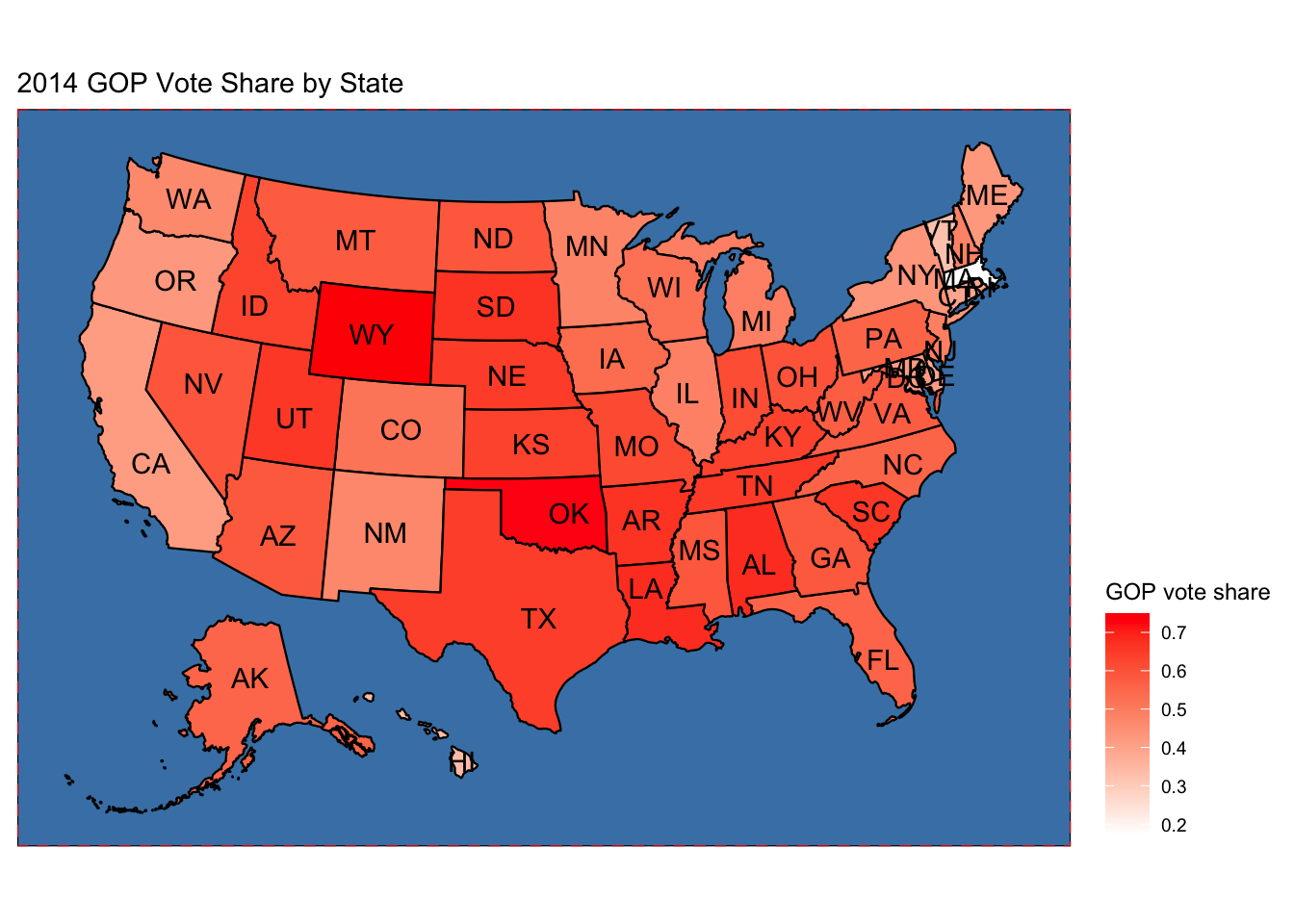This is the first post in a series of weekly publications about the US 2022 midterm elections for the House of Representatives. From today until election day on November 8th 2022 I will be developing a predictive model for estimating the likely outcomes of the election. In the aftermath, I will be able to evaluate the precision of the model and reflect on its strengths and weaknesses.
For now, we will visualize the two party vote share from the 2014 midterm elections by state and district. Then we will look at seat shares for the states and compare to our popular vote margins to see the voter distribution effects of districting and gerrymandering on seat outcomes. Lastly we well identify historical swing states so we can get a sense of what states to narrow in on for further modeling.
2014 Trends in Popular Voting:
Lets start with a simple map colored in to represent the results of the 2014 House elections. We will try to get a quick answer to: Which way do states lean in their two party popular votes when aggregating all districts?

The map above will roughly estimate which seats are locked in for either party. With redistricting happening in the recent 2020 census, popular vote trends have a unique advantage of continuity despite shifting county boundaries.
The overall picture paints strong Republican presence in the central and mountain time zones as well as strong turnout in the South East. States like Wyoming and Oklahoma in bright red indicate overwhelming Republican popular vote majorities. On the other hand, near the coasts in light pink and white are states like Massachusetts and California which have overwhelming Democrat popular vote majorities.
It initially seems that most states in orage are likely harder to predict what outcomes they might have. Looking further into districting though gives more concrete insights into how thie popular vote is distributed to win seats in Congress.
Districting Effects:

The difference when looking at districts is that area and population density are negatively correlated. The map above shows large swaths of red districts with an occasional pink and white island around urban areas.
Although it seems that republicans have a large advantage in this visualization, do not be misled because the districts on this map are small and the smallest are generally held by Democratic voters and they are worth just the same as the larger red districts.
Lets aggregate these district results to the state level and compare our earlier map of popular vote to seat outcomes.
Identifying Swing States:
To clear the obvious confusion of: What in the world is “Swinginess”? A state’s propensity to be a swing state is taken to mean: How volatile is the two party voting turnout over many election cycles? To measure this, we can use time series data going back to 1968 on congressional elections. The Swinginess formula is: \(R_{x}/(D_{x}+R_{x})-R_{x-2}/(D_{x-2}+R_{x-2})\) Where R and D are total votes for Republican and Democratic candidates respectively and x is the election year. In other words it measures the difference between which direction the state voted in the last election to the next election. Looking across time, Virginia, South Carolina and Florida seem to recently have high volatility in their two party vote shares while a state like California has settled down and not moved significantly recently. Data on swing states is useful for prediction because is will indicate where prediction confidence should be dialed up or down for measuring the overall confidence of a prediction.
